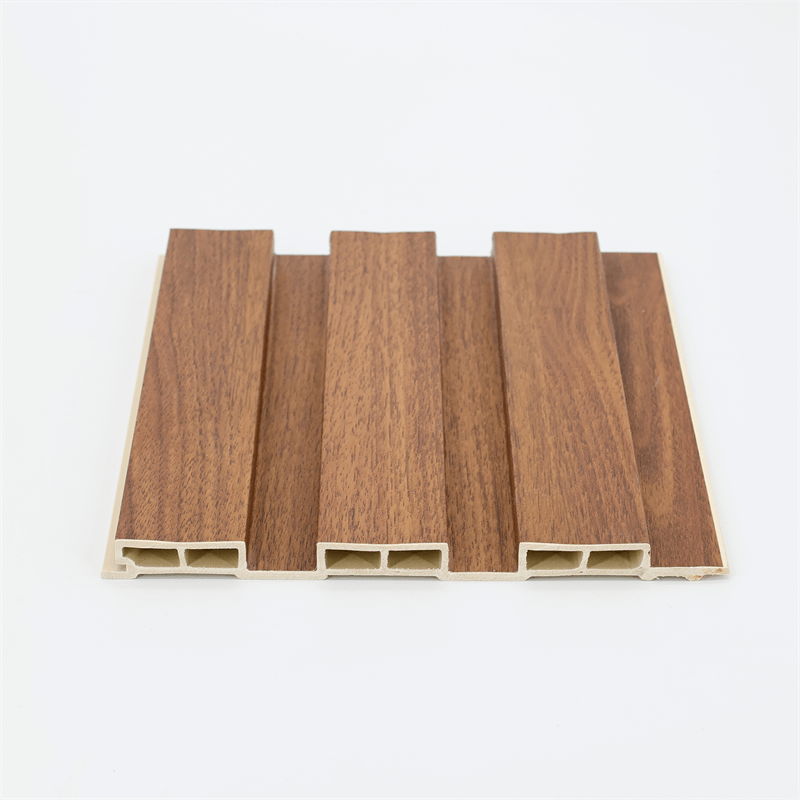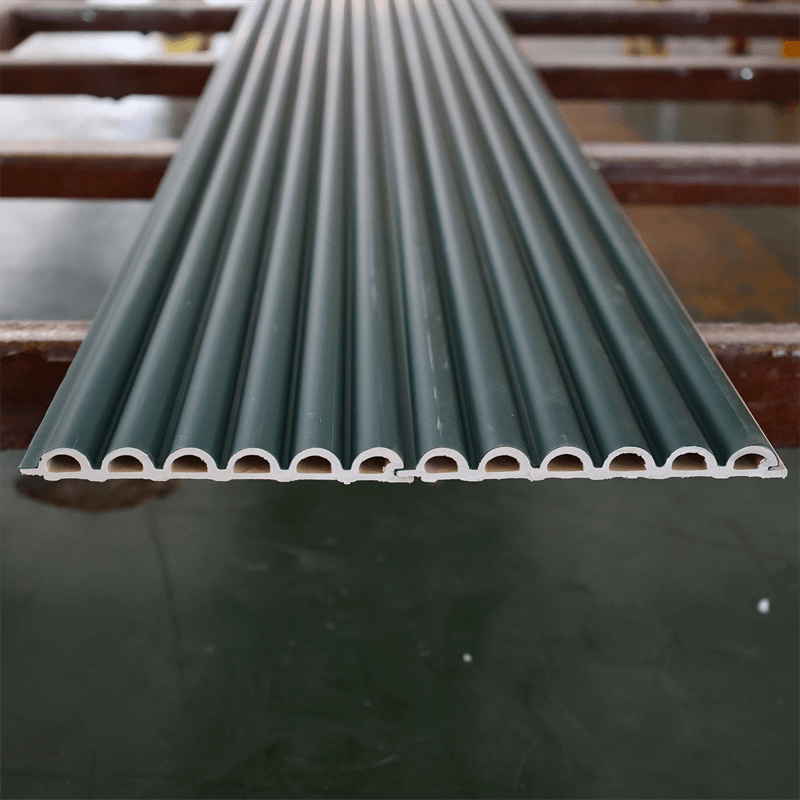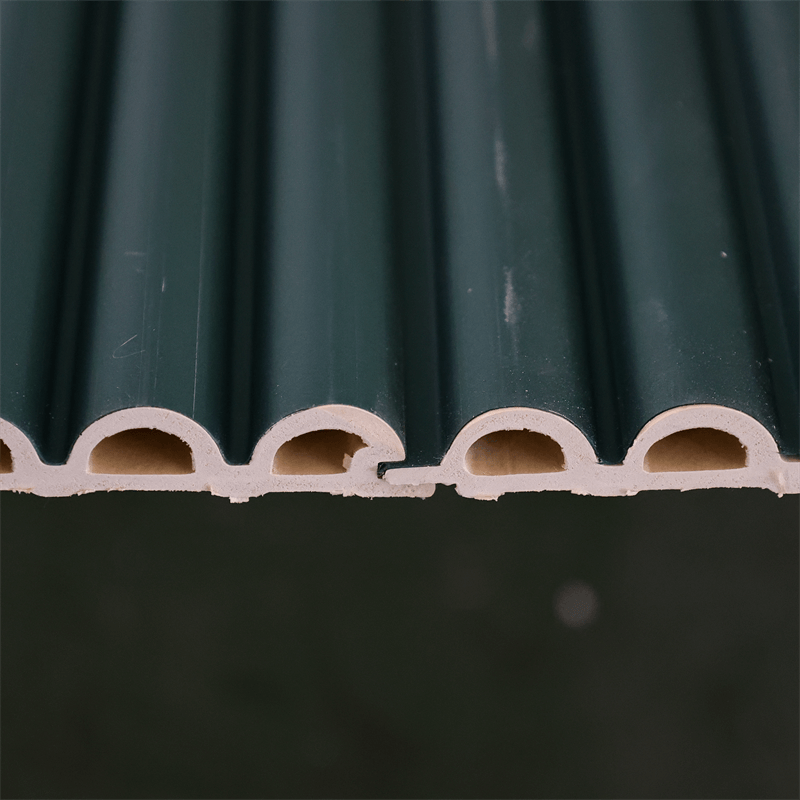In today’s architecture, the demand for sustainable and innovative building materials is higher than ever.
WPC (Wood-Plastic Composite) wall panels have emerged as a prominent solution that combines the natural beauty of wood with the durability of plastic.
This essay delves into the advantages of WPC wall panels in modern architecture. It explores their environmental benefits, aesthetic appeal, functional advantages, and their contribution to sustainable design.

I. Environmental Benefits of WPC Wall Panels
One of the primary advantages of WPC wall panels lies in their environmental benefits.
Unlike traditional wood panels that contribute to deforestation, WPC panels are made from recycled wood fibers and plastic materials.
By utilizing these recycled components, WPC wall panels help reduce the demand for virgin timber, contributing to the preservation of forests and biodiversity.
Additionally, the manufacturing process of WPC panels requires less energy compared to the production of other building materials, such as concrete or steel.
This reduced energy consumption results in a lower carbon footprint, making WPC wall panels a more sustainable choice for architects and builders concerned about environmental impact.
II. Aesthetic Appeal and Design Versatility
WPC wall panels offer a wide range of design possibilities and aesthetic appeal, making them a popular choice in modern architecture.
The combination of wood fibers and plastic creates a material that replicates the natural texture and appearance of wood, adding warmth and visual interest to any space.
These panels are available in various finishes, colors, and patterns, allowing architects and designers to create customized looks that suit the overall design concept.
Whether it’s a sleek and contemporary facade or a rustic interior wall, WPC panels can be tailored to meet the desired aesthetic vision, adding a touch of elegance and sophistication to the architecture.

III. Functional Advantages of WPC Wall Panels
Apart from their environmental and aesthetic benefits, WPC wall panels offer several functional advantages that contribute to the overall performance of buildings.
Firstly, they are highly durable and resistant to rot, decay, and insect infestation.
Unlike traditional wood panels, WPC panels do not warp, crack, or splinter, ensuring long-term structural integrity and reducing maintenance requirements.
Moreover, WPC wall panels exhibit excellent moisture resistance, making them ideal for both interior and exterior applications.
They are less prone to water damage, mold growth, and deterioration, making them suitable for areas with high humidity or exposure to moisture, such as bathrooms or coastal regions.
Additionally, WPC panels contribute to thermal insulation, helping regulate indoor temperature and reducing energy consumption.
Their insulating properties assist in maintaining a comfortable environment while reducing the reliance on heating or cooling systems, ultimately leading to energy savings and lower utility costs.
IV. Contribution to Sustainable Design
In the pursuit of sustainable architecture, WPC wall panels play a significant role.
Their recyclable nature, reduced carbon footprint, and energy-efficient manufacturing process align with the principles of sustainable design.
By incorporating WPC panels into architectural projects, designers and builders can contribute to green building certifications,
such as LEED (Leadership in Energy and Environmental Design), and meet the growing demand for environmentally conscious structures.
Furthermore, the longevity and low maintenance requirements of WPC wall panels contribute to sustainable practices.
Their resistance to weathering, UV radiation, and wear and tear ensures that buildings retain their aesthetics and structural integrity over time,
reducing the need for frequent replacements and associated resource consumption.
WPC wall panels offer a myriad of advantages that make them a desirable choice in modern architecture.
Their environmental benefits, including the use of recycled materials and reduced energy consumption, make them a sustainable alternative to traditional wood panels.
Furthermore, their aesthetic appeal, design versatility, and functional advantages contribute to the overall quality and performance of architectural projects.
As the demand for sustainable and innovative building materials continues to rise, WPC wall panels stand out as a solution that meets both aesthetic and functional requirements.
By incorporating WPC panels into designs, architects and builders can contribute to environmentally conscious construction practices and create structures that harmonize with their surroundings.
In conclusion, the advantages of WPC wall panels in modern architecture extend beyond their visual appeal.
Their contribution to sustainable design, durability, and functional benefits make them a valuable asset in creating buildings that prioritize both aesthetics and environmental responsibility.

In the ever-evolving world of architecture, the advantages of WPC wall panels have become increasingly apparent.
Their environmental benefits, aesthetic appeal, functional advantages, and contribution to sustainable design have positioned them as a go-to choice for architects and builders.
As the industry continues to prioritize sustainable practices and seek innovative materials, WPC panels have emerged as a versatile solution that combines the best of both wood and plastic.
The environmental benefits of WPC wall panels, including the use of recycled materials and reduced energy consumption during manufacturing, align with the goals of sustainability and conservation.
By choosing WPC panels, architects can contribute to the preservation of forests and reduce their carbon footprint.
The aesthetic appeal and design versatility of WPC wall panels offer architects and designers the freedom to unleash their creativity.
With a wide range of finishes, colors, and patterns available, these panels can be customized to suit any architectural vision, adding warmth and elegance to spaces.
Functionally, WPC wall panels excel in durability, resistance to moisture, and thermal insulation.
Their ability to withstand rot, decay, and insect infestation ensures long-lasting performance, while their resistance to water damage and mold growth makes them suitable for various applications.
Additionally, their thermal insulation properties contribute to energy efficiency, reducing the reliance on heating and cooling systems and promoting sustainable building practices.
In the pursuit of sustainable design, WPC wall panels have proven to be a valuable asset.
Their recyclable nature, long lifespan, and low maintenance requirements align with the principles of green building certifications and contribute to the overall sustainability of architectural projects.
In conclusion, WPC wall panels have become an integral part of modern architecture due to their numerous advantages.
By combining the natural beauty of wood, the durability of plastic, and the commitment to sustainability, these panels offer a compelling solution for architects and builders.
As the industry continues to evolve, WPC panels are likely to remain at the forefront of sustainable design, contributing to the creation of environmentally responsible and visually stunning structures.